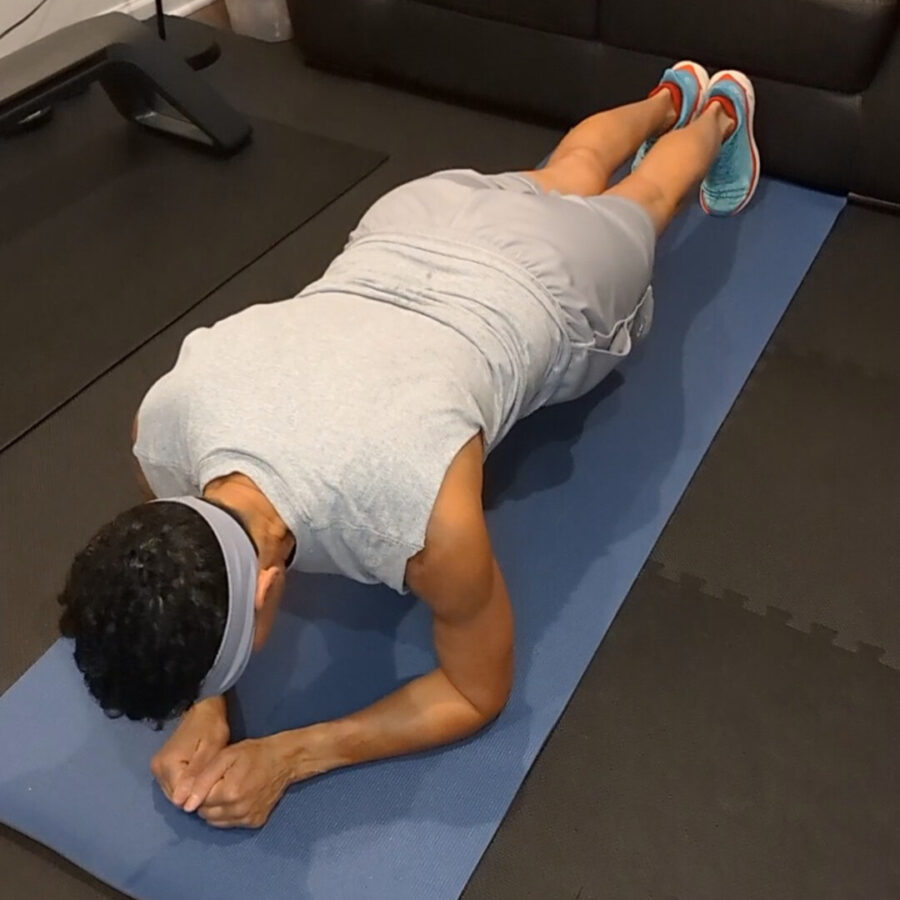The relationship between core weakness and back pain.
Whenever my back starts aching, I know it’s most likely due to neglecting my core. Without getting too complex, core muscles are comprised of a group of 20+ muscles in your stomach, back, glutes, and hips.
- Stomach (Abdominal Muscles): Rectus abdominis (abs), Obliques (internal and external), and Transversus abdominis.
- Back Muscles: erector spinae, multifidus, and quadratus lumborum.
- Pelvic Floor Muscles: Pelvic diaphragm.
- Other Muscles: diaphragm, gluteus maximus, iliopsoas, and hip flexors.
Core muscles assist with stabilizing your spine. They help you get out of bed in the morning (the first crunch of the day), assist you in standing upright, and when you bend over to pick something up, your core muscles support your ability to stand back up. Core muscles also help the spine, pelvis, and kinetic chain with balancing the load between the upper and lower body.
A strong core is also essential for maintaining good posture. When your core is weak, you tend to slouch or adopt poor posture to alleviate back pain, which only perpetuates the problem. My grandfather would always grab me by the chin and push on my upper back while telling me to stand up straight. I always envision this memory when I find myself slouching. This simple act alone tends to cause me to engage my core.
In summary, a strong core is essential for preventing back pain. When core muscles are weak, the lower back has to overcompensate, leading to strain, instability, and chronic pain. Strengthening the core effectively reduces back pain and improves movement mechanics.

Who doesn’t want six-pack abs?
The significance of strong abs extends beyond achieving a six-pack. Well-developed abdominal muscles and a strong core are closely linked to decreased lower back pain. While back pain can also result from additional factors like muscle strains, sports injuries, or underlying conditions, this article will focus on the connection between a weak core and lower back pain.
To put it simply, having a strong core is essential to properly supporting your spine. A simple way to understand this concept is to try standing on one foot. If you lose your balance, engage your core instead of reaching for something to stabilize yourself. Engaging your core muscles should improve your balance. If it doesn’t, then your core may need strengthening.
Lastly, core muscles play a vital role in protecting your spine during physical activities and sports. Using improper lifting techniques or sitting for long periods without proper core support can increase the risk of injury. This is why it’s important to have an ergonomic chair or to consider using a standing desk while working. Additionally, it’s essential to understand the fundamentals of weightlifting techniques to prevent potential back injuries.
Enough said.
There’s a link between a weak core and lower back pain. What can you do?
Try these simple exercises to strengthen your core.

1. Walk: This one is easy. Engage your core while walking. The trick is to remember to breathe. This will force you to improve your posture. You can make this a social activity by inviting friends. You’ll kill two birds with one stone by getting your steps in while strengthening your core.
2. (modified) Dead Bug exercise: Lie on your back with your arms straight up and your knees at a 90-degree angle. Place the palm of your right hand on the right thigh.
Simultaneously, straighten your left leg and left arm. Focus on pressing your back to the ground AND maintaining firm pressure on your thigh. Perform this exercise in a slow, controlled fashion. Switch sides when your arm and leg return to the starting position.
The enclosed video is a variation. I prefer to place the palm of my hand on my tight for a more intense abdominal workout.

3. Plank: Planks are especially helpful for individuals who suffer from back pain. This exercise engages the core muscles while applying low compressive forces, which helps avoid excessive pressure on the lumbar spine. According to a 2014 study, planks activate more core muscles than traditional crunches while reducing strain on the spine.
When performing the plank, the goal is to maintain a neutral spine despite the forces acting on it. You can perform a standing plank, forearm plank, or pistol plank, which rotates between forearm planks and standing planks.
4. Bird Dog: Get down on all fours, placing your hands underneath your shoulders with your knees underneath your hips. Reach one arm and the opposite leg forward and hold for two to three seconds, then return to the start position. Switch arms & leg and repeat.
5. Reverse Crunch: Lie down on your back with legs in a 90-degree position. You can place your hands in the small of your back for support. Bring your knees to your chest, then slowly lower to the floor without touching the ground.
Start with these four exercises three times a week. Rotate through the exercises for 30 seconds for three sets. If you’re unable to complete 30 seconds, start with 20 seconds. If you are unable to complete three sets, start with two. Once the duration and exercises become easy, increase the number of sets and/or duration.
Let me know in the comments how these worked out for you. I’m not a doctor. This information comes from years as a trainer and personal fitness experience. As stated above, always consult your doctor prior to starting a fitness plan.


